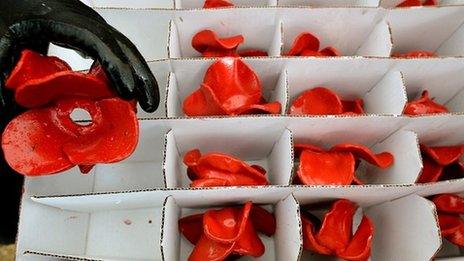Visitors soar to see Tower of London poppies at Yorkshire Sculpture Park
- Published
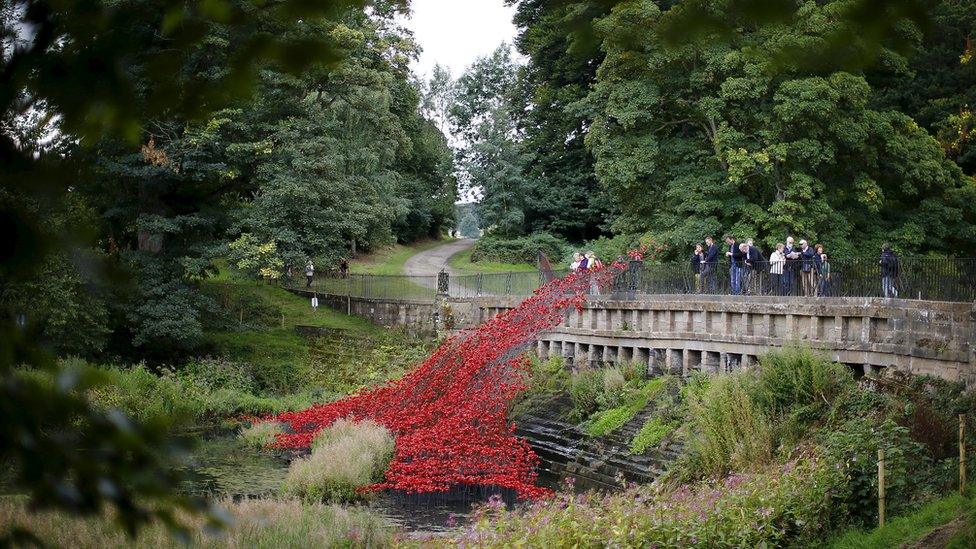
The full poppies sculpture at the Tower of London in 2014 drew five million visitors
A sculpture park near Wakefield has reported a 170% rise in visitors since poppies from the Tower of London went on show in September.
Yorkshire Sculpture Park said 100,000 people visited in September when the poppies were installed, compared with about 37,000 last year.
The poppy arch segment, Wave, consists of 5,800 ceramic poppies falling from Cascade Bridge into the Lower Lake.
Park entry on Remembrance Sunday and Armistice Day will be by ticket only.
Yorkshire Sculpture Park said visitor numbers would be restricted on 8 and 11 November "to ensure a calm and contemplative experience for all".
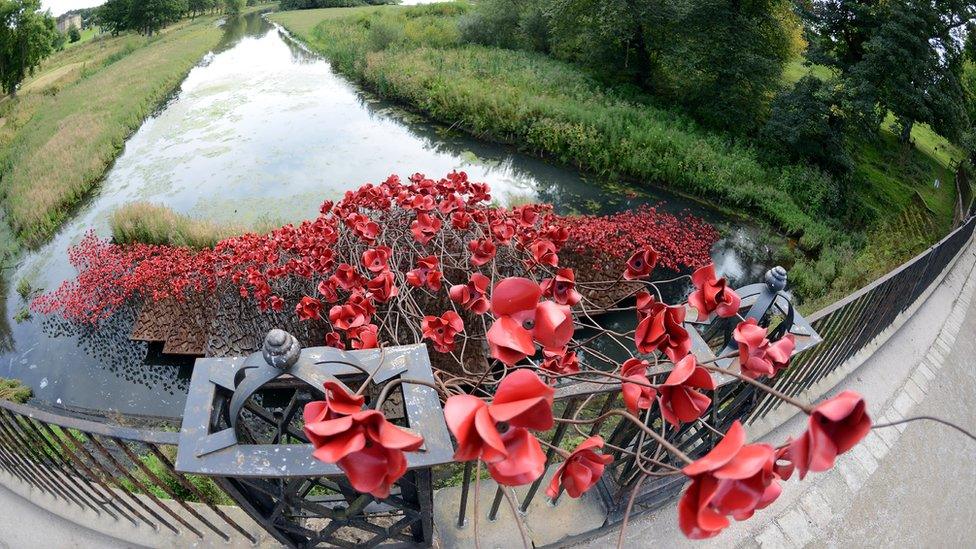
The arch segment, Wave, consists of 5,800 ceramic poppies falling from Cascade Bridge into the Lower Lake at Yorkshire Sculpture Park
Belinda Eldridge, operations manager, said the 170% rise in visitor numbers was "phenomenal" and Yorkshire Sculpture Park was expecting its biggest ever year, with more than half a million visitors.
"We feel extremely privileged to be able to bring the poppies to Yorkshire," she said.
"It's safe to say tens of thousands of people are coming as a result of the poppies."
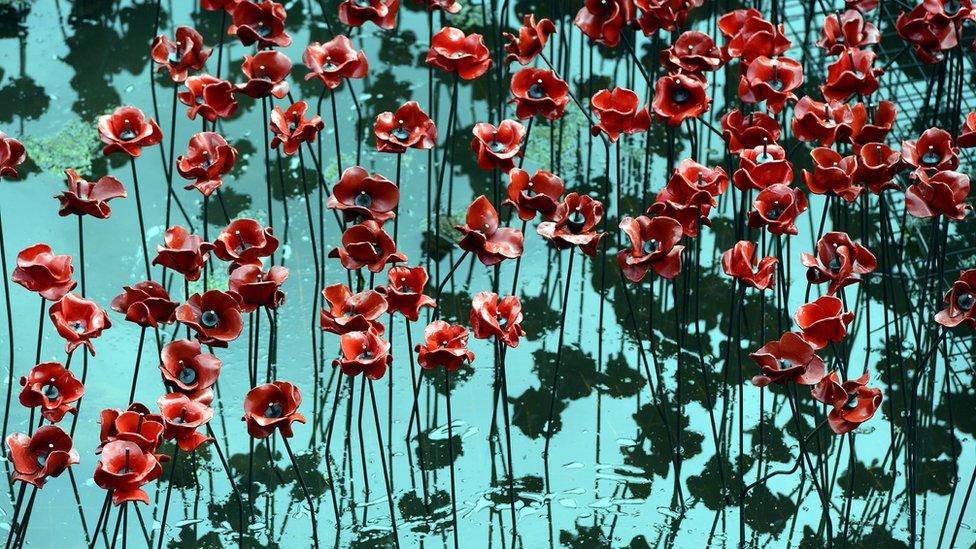
Each poppy in Blood Swept Lands and Seas of Red represents a British and Commonwealth death during World War One
She said the sculpture had a "different feel" from any other sculpture at the park, and many people found seeing the poppies was a "calm and contemplative experience".
The installation is part of a nationwide tour of poppies from the artwork Blood Swept Lands and Seas of Red, which was unveiled in London in July 2014.
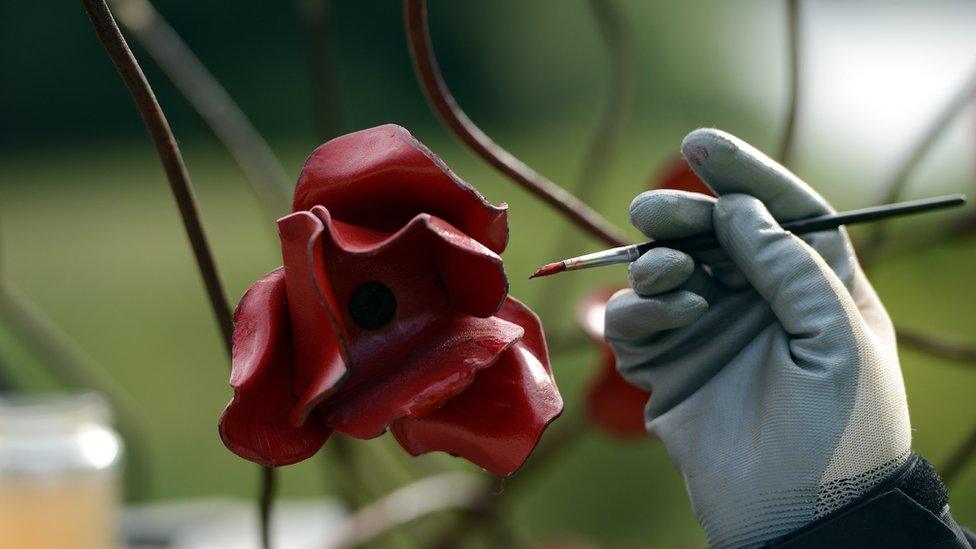
The cascade of poppies, or weeping window, is on show in Northumberland and will move to Liverpool in November, with the complete artwork kept permanently at London and Manchester's Imperial War Museums
The artwork, created by artist Paul Cummins and designer Tom Piper, marked 100 years since the start of World War One and drew more than five million visitors.
The Yorkshire Regiment raised 24 Battalions served by 65,000 men, of whom 9,000 died.
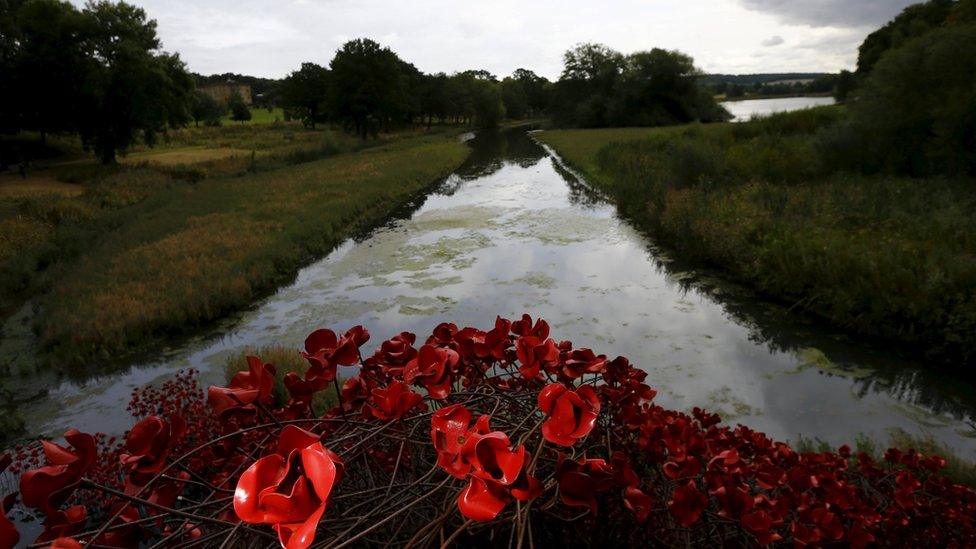
Wave will be on show at Yorkshire Sculpture Park until January
- Published5 September 2015

- Published30 July 2015
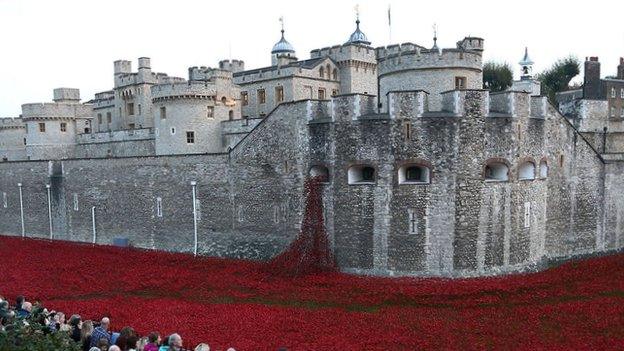
- Published9 November 2014
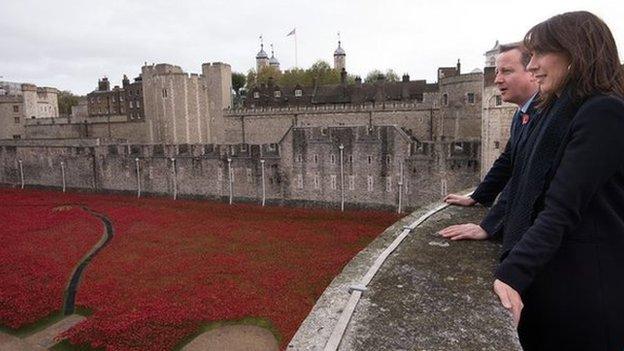
- Published12 November 2014
